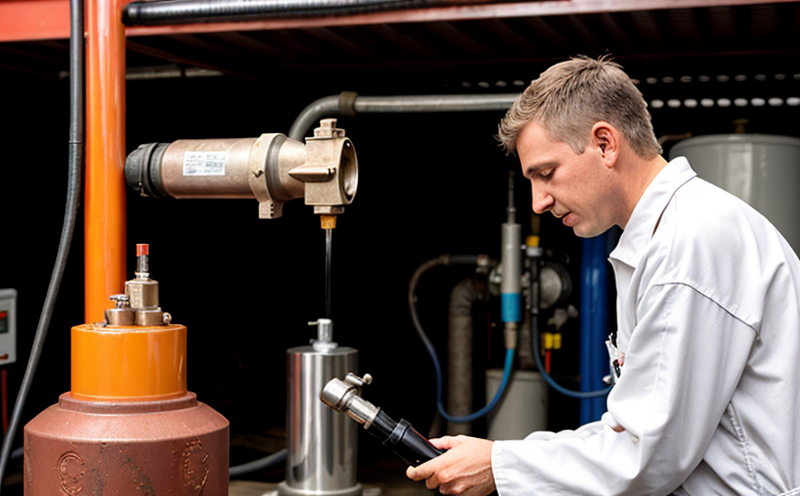ASTM D4629 Trace Nitrogen Testing in Jet Fuels
The ASTM D4629 test method is a critical standard used to determine the trace nitrogen content in jet fuels. This test ensures that the fuel meets stringent quality standards, which are essential for aviation safety and performance. The presence of trace amounts of nitrogen can have significant implications on engine efficiency, corrosion resistance, and overall fuel stability.
Trace nitrogen is introduced into jet fuel during various stages of refining and blending processes. While it is present in small quantities, even minor fluctuations can affect the fuel's quality and performance. The ASTM D4629 test helps monitor these trace levels to ensure they remain within acceptable limits as specified by aviation authorities such as the International Civil Aviation Organization (ICAO) and the European Union Aviation Safety Agency (EASA).
The testing process involves precise sample preparation, using a combination of distillation and titration methods. The sample is first distilled under controlled conditions to remove non-condensable gases. This step ensures that only trace nitrogen remains for further analysis. Subsequently, the remaining liquid undergoes a titration process with a standard solution to determine the exact amount of nitrogen present.
Accurate measurement of trace nitrogen levels in jet fuels is crucial because it directly impacts fuel performance and longevity. High levels can lead to increased corrosion rates, reduced engine efficiency, and potential operational issues. Conversely, low levels may indicate contamination or improper blending processes. Therefore, regular monitoring through ASTM D4629 testing helps maintain consistent fuel quality, which is vital for the aviation industry.
The test results are reported in parts per million (ppm) and compared against specified limits set by regulatory bodies. Compliance with these standards ensures that aircraft engines operate efficiently and safely under all conditions. This compliance also aligns with broader sustainability goals within the aviation sector, promoting cleaner operations and reducing environmental impact.
Why ASTM D4629 Testing Matters
- Ensures Fuel Quality: By maintaining trace nitrogen levels within safe limits, this test helps prevent issues related to fuel stability, efficiency, and safety.
- Supports Regulatory Compliance: Adhering to ASTM D4629 ensures that jet fuels meet all necessary regulatory requirements for use in commercial aviation.
- Promotes Engine Efficiency: Proper trace nitrogen levels contribute to better engine performance and longevity, which is critical for aircraft reliability.





